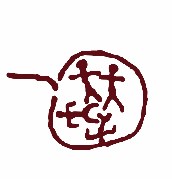Stone Age Demographics
Stone Age Demographics: multi-scale exploration of population variations and dynamics.

This 4 year project (2017 - 2021) is funded by the Norwegian Research Council, and supported by the Faculty of Humanities, Social Sciences and Education as well as by Tromsø University Museum, both at the Arctic University of Norway.
PIs: Charlotte Damm, Marianne Skandfer
Participating researchers: Jan Magne Gjerde, Bryan Hood, Per Sjögren, Peter Jordan, Fredrik Hallgren, Lotte Eigeland.
PhDs: Erlend Kirkeng Jørgensen, Kenneth Webb Vollan and Roberta Gordaoff
Associated scholars: Knut Andreas Bergsvik, Ben Fitzhugh, Bjarne Grønnow, Antti Lahelma, Miika Tallavaara
Archaeological investigation of the complex interrelationship between demographic patterns, cultural transformations and long-term environmental change is a new and expanding field of research. It requires reconstruction of demographic patterns followed by correlations with appropriate cultural and environmental data. The increasing amount of archaeological data, better documentation and new technologies now provide excellent opportunities for studying relative demographic fluctuations and regional variation even in Stone Age populations. As a result of this, a new basis for discussion of demographic variability and its dynamic relations to environment and social organisation amongst hunter-gatherers is emerging. Northern Fennoscandia, and in particular northern Norway, presents an ideal setting for locally embedded case studies with global implications for the study of demographic processes and their long-term cultural consequences.
This multi-scale study will provide an original interpretation of demographic variations in a hunter-gatherer setting, and will be the first to present a comprehensive analysis of the paleodemography of Stone Age Fennoscandia. The multi-scalar approach – combined with integration of multiple lines of evidence ranging from of dwellings, lithics and rock art sites and landscapes - will allow us to address a new generation of research questions pertaining to the inter-locking demographic, economic and social-cultural dynamics of prehistoric forager societies from a substantially stronger evidential and methodological platform. The project intends to:
- Produce a set of demographic models for long-term population fluctuations, regional settlement variation and local site use respectively
- Analyse the correlations between demography and environmental and socio-cultural transformations
- Present the first detailed analysis of the demographic context of northern rock art sites
- Provide a new and coherent model for the demographic development of northern Fennoscandia, its background and cultural impact
- Integrate the results in the international debate on hunter-gatherer demography